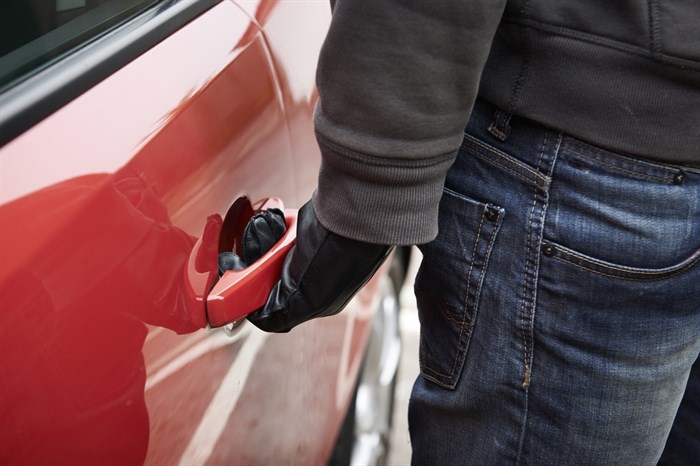
Image Credit: Shutterstock
July 24, 2019 - 5:00 PM
KAMLOOPS — It’s a completely preventable crime, but yet Kamloops RCMP are still receiving regular calls to investigate these complaints from the community.
Recently, police in Kamloops began distributing weekly maps of thefts from vehicles taking place throughout the city to show residents thefts can happen anywhere and to serve as a reminder to people to lock their vehicles and not leave valuables inside of them.
“We need people to do their part. It really is a preventable crime,” Kamloops RCMP spokesperson Cpl. Jodi Shelkie says. “We have tried many initiatives on our own and we are not beating the battle. We are not solving it any way through crime prevention, reduction or targeting criminals.”
Whether the window of a vehicle is smashed or doors are left unlocked, Shelkie says thieves are usually breaking into vehicles to get something they have seen.
“There are more people who forget to lock their vehicles but in both situations there is something in the vehicle to be stolen,” she says. “So if they are breaking a window, it’s to get something.”
Shelkie explains how this type of crime is open to anybody, not just "career criminals".
“Pretty much anybody who needs some quick cash will go out and try door handles looking for items inside a vehicle,” she says.
When officers receive these complaints, there are different ways they respond. If a window is broken, RCMP may send officers from the forensic identification unit to gather any evidence.
“If there was something left inside of the vehicle like if they broke it with some sort of tool or something that fingerprints could be garnered from,” she says.
In areas where more than one vehicle was broken into, officers may try to obtain surveillance footage from homeowners in the area to try and identify a suspect.
Shelkie says the data police have collected shows there really is no trend when it comes to thefts from motor vehicles in the city.
“We started collecting this information years ago and we use it in our computer statistics,” she says. “That would tell us if there is a concentration of vehicles being broken into in certain neighbourhoods.”
If police are able to identify hot spots for thieves, they might send crime prevention units or auxiliary constables with volunteers into a neighbourhood on weekends to blanket a neighbourhood with notices.
“They look to see if a vehicle is locked, no windows left down and if there is nothing left in sight they leave a notice saying thank you.”
If they do see an unlocked vehicle or one with items left inside they will leave a notice asking residents to please lock their vehicles and remove their valuables.
“We wouldn’t need to go out to these measures that we do if all the vehicles were locked and there was nothing of value to steal,” she says. “Obviously, this is something that needs to be done by the community and that is to lock their vehicles and take their items with them.”
If you see somebody in the act if breaking into a vehicle call 911, Shelkie says. If you see someone exhibiting suspicious behaviour such as trying door handles call the Kamloops RCMP at their regular line at 250-828-3000.
To contact a reporter for this story, email Karen Edwards or call (250) 819-3723 or email the editor. You can also submit photos, videos or news tips to the newsroom and be entered to win a monthly prize draw.
We welcome your comments and opinions on our stories but play nice. We won't censor or delete comments unless they contain off-topic statements or links, unnecessary vulgarity, false facts, spam or obviously fake profiles. If you have any concerns about what you see in comments, email the editor in the link above.
News from © iNFOnews, 2019